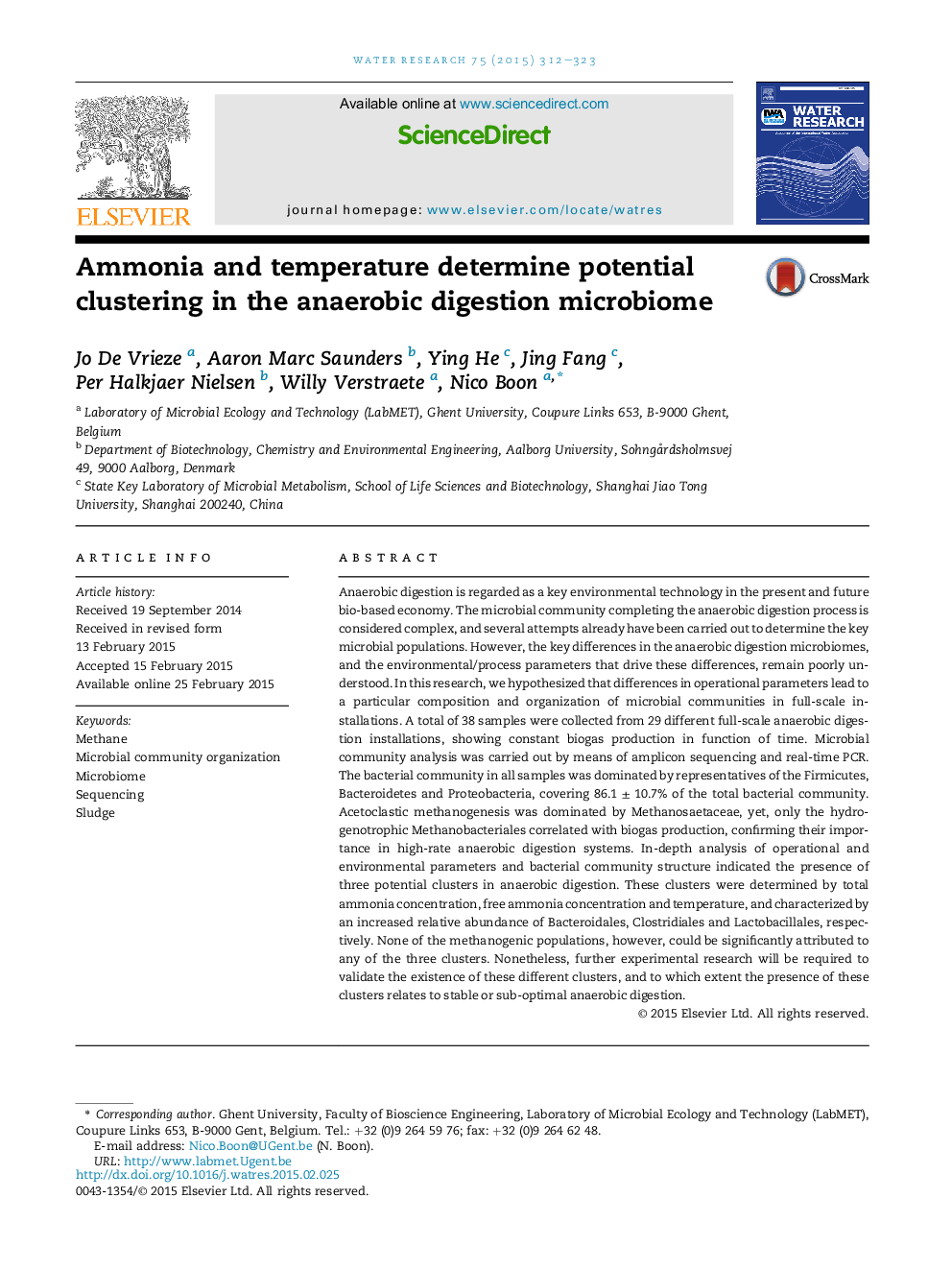| کد مقاله | کد نشریه | سال انتشار | مقاله انگلیسی | نسخه تمام متن |
|---|---|---|---|---|
| 4481218 | 1623093 | 2015 | 12 صفحه PDF | دانلود رایگان |
• Firmicutes, Bacteroidetes and Proteobacteria dominate the microbial community.
• Methanobacteriales positively correlate with high biogas production rates.
• Three potential clusters were discovered in anaerobic digestion.
• Ammonia concentration and temperature determine the three potential clusters.
Anaerobic digestion is regarded as a key environmental technology in the present and future bio-based economy. The microbial community completing the anaerobic digestion process is considered complex, and several attempts already have been carried out to determine the key microbial populations. However, the key differences in the anaerobic digestion microbiomes, and the environmental/process parameters that drive these differences, remain poorly understood. In this research, we hypothesized that differences in operational parameters lead to a particular composition and organization of microbial communities in full-scale installations. A total of 38 samples were collected from 29 different full-scale anaerobic digestion installations, showing constant biogas production in function of time. Microbial community analysis was carried out by means of amplicon sequencing and real-time PCR. The bacterial community in all samples was dominated by representatives of the Firmicutes, Bacteroidetes and Proteobacteria, covering 86.1 ± 10.7% of the total bacterial community. Acetoclastic methanogenesis was dominated by Methanosaetaceae, yet, only the hydrogenotrophic Methanobacteriales correlated with biogas production, confirming their importance in high-rate anaerobic digestion systems. In-depth analysis of operational and environmental parameters and bacterial community structure indicated the presence of three potential clusters in anaerobic digestion. These clusters were determined by total ammonia concentration, free ammonia concentration and temperature, and characterized by an increased relative abundance of Bacteroidales, Clostridiales and Lactobacillales, respectively. None of the methanogenic populations, however, could be significantly attributed to any of the three clusters. Nonetheless, further experimental research will be required to validate the existence of these different clusters, and to which extent the presence of these clusters relates to stable or sub-optimal anaerobic digestion.
Figure optionsDownload high-quality image (136 K)Download as PowerPoint slide
Journal: Water Research - Volume 75, 15 May 2015, Pages 312–323
